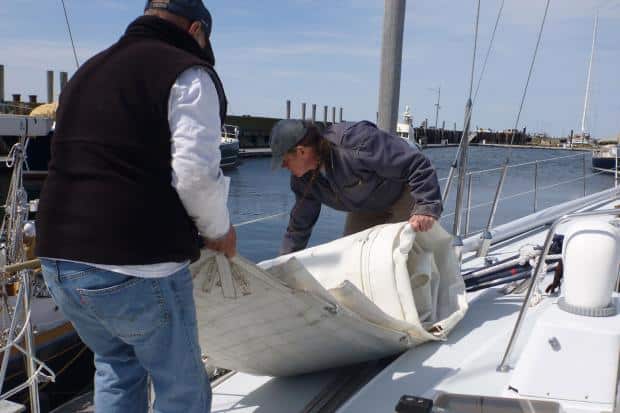
I was on the phone with my mother some time ago and she told me she hates cherries. In the years I spent at home with my mother and father, how could I have missed this basic fact of her life?
But I had. And on a sunny afternoon a week ago, as I helped bend on the mainsail of the Swan 57 Flyer while a wind with a bite in it blew off the ocean, up Narragansett Bay and straight down my back, I had plenty of time to ponder it, along with the 16 Harken luff cars and the Nautor custom-made boat hook I must not have paid any attention to in the years I spent aboard her in the Caribbean and New England.
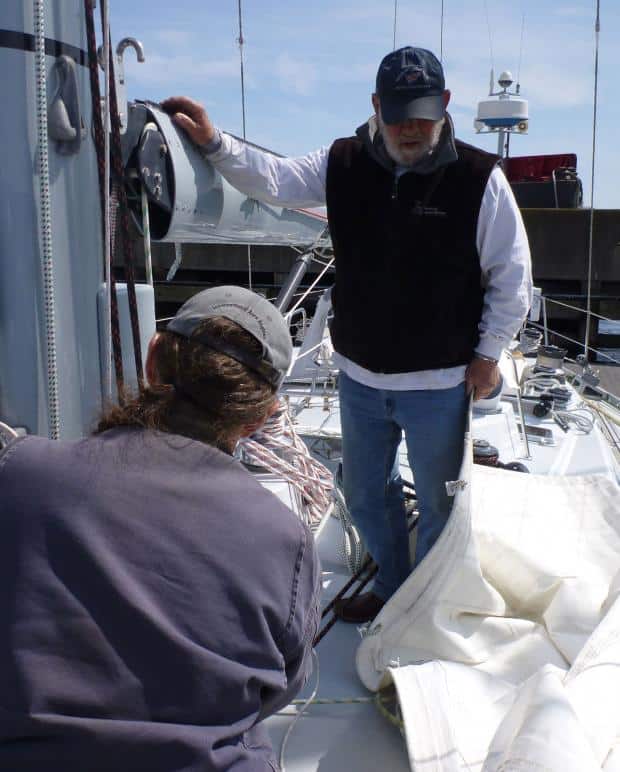
The reason? I was engaged in a slow-going task and my concentration wandered. My other half, Captain Rick Martell, and mate Todd Mennillo had done the heavy lifting: They’d hauled Flyer‘s heavy Hood cruising main onto the boom, slid the foot in the track, and it was now time to hank on the luff to the cars.
With my hands locked in a tight grip, I propped the boat hook up under the cars so they wouldn’t slide down in guillotine fashion and chop Todd’s fingers in half as he attempted to slide the quick pin that accommodated each hank via a webbed loop into place in its individual hard rubber becket.
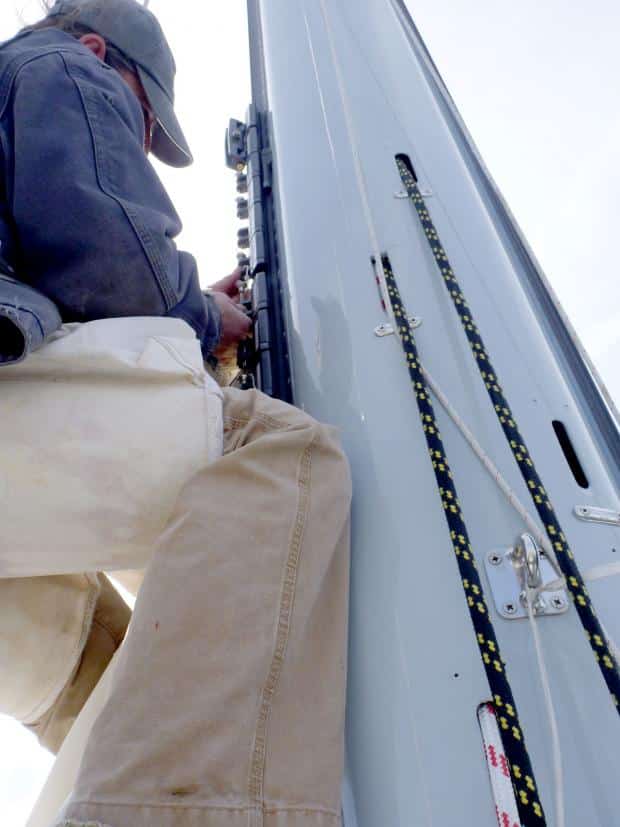
Dangling from a bosun’s chair, Todd’s reflexes were swift – I lost the grip a couple of times and fast as lightning he’d pull his fingers away. He’s still talking to me though Captain Martell wasn’t at all amused.
By and large, aside from those couple of near hits, the chore went smoothly, if not speedily, and now I’m a little smarter about how Flyer‘s mainsail works, a good thing. Once the main was on, we flaked it, tied the ties, and I offered to stow the boat hook — which put me back to the quandary that became the object of my attention and irritation: I had no idea where it belonged. Surely in all the years that Rick sailed the boat, and I joined along, I had to grab the boat hook?
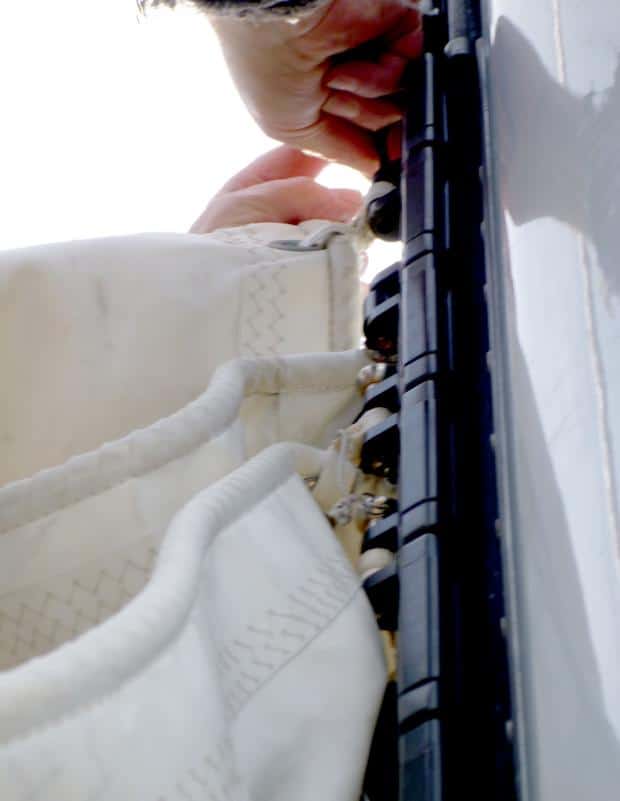
Maybe not. Who knows? All I can say is that once he told me where it belongs (it’s mounted in a special spot on a bulkhead in the peak of the boat) and showed me how it screws apart into two lengths kept attached by an internal wire, I was on the job, and so impressed with the setup that I took a picture of it. Considering how many lousy boat hooks are on the market, if I owned a Swan, I certainly wouldn’t mind forking over the 240 euros, or about $333 (excluding tax and shipping) for one of them.
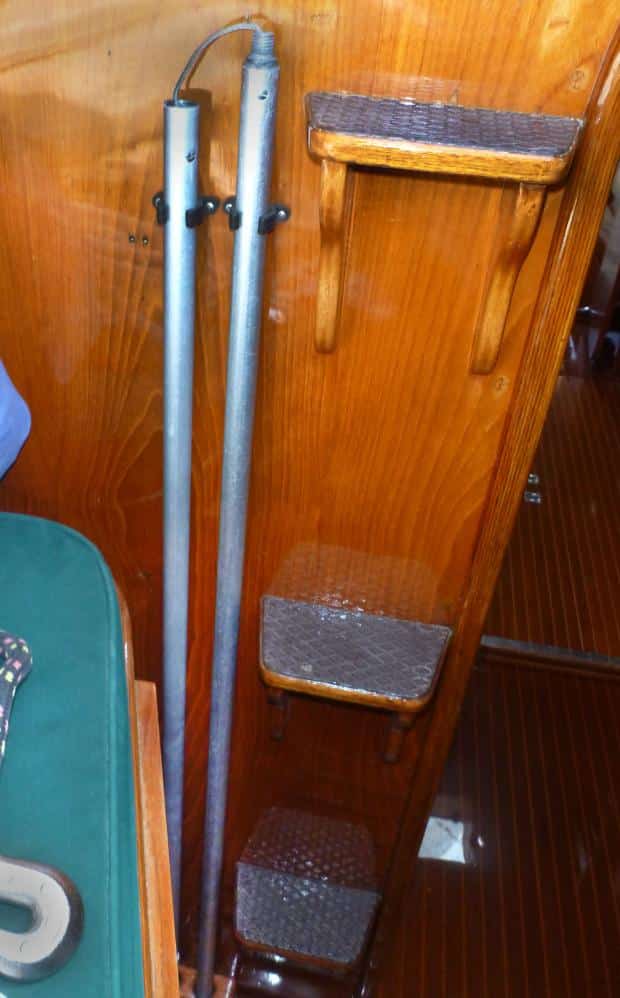
That price came to me from Nautor Swan customer care assistant Nina Forss-Hästbacka, who also confirmed another bit for me about the 57, which is a Sparkman Stephens design. Flyer was built in 1978, hull no. 7. “Forty-nine Swan 57s were built from 1977 to 1984,” Nina told me in an email. “The last S&S design was in fact the 57.”
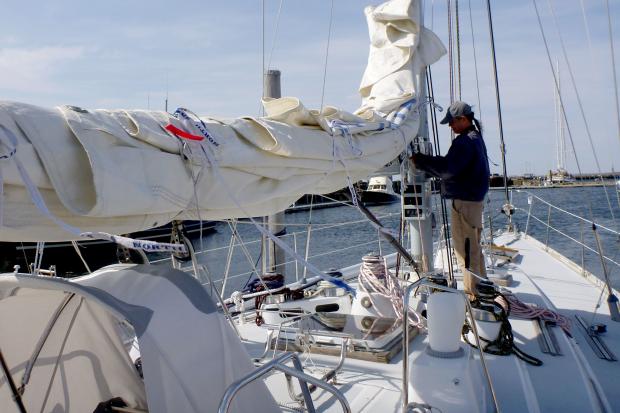
Mainsail on, boat hook stowed, it was time to move on to the day’s next chores. So I bid the boys farewell, hopped in my car at Hinckley Yacht Services in Portsmouth, Rhode Island, and headed home to Newport. Halfway there, I reached into the pocket of my fleece for a Kleenex. Instead I pulled out two wrenches, the very ones that Todd handed me after he bolted the mainsail’s aluminum reinforced head to the top luff car. How did I not know they were still in my pocket? The irritating theme of the day reared its head yet again.








